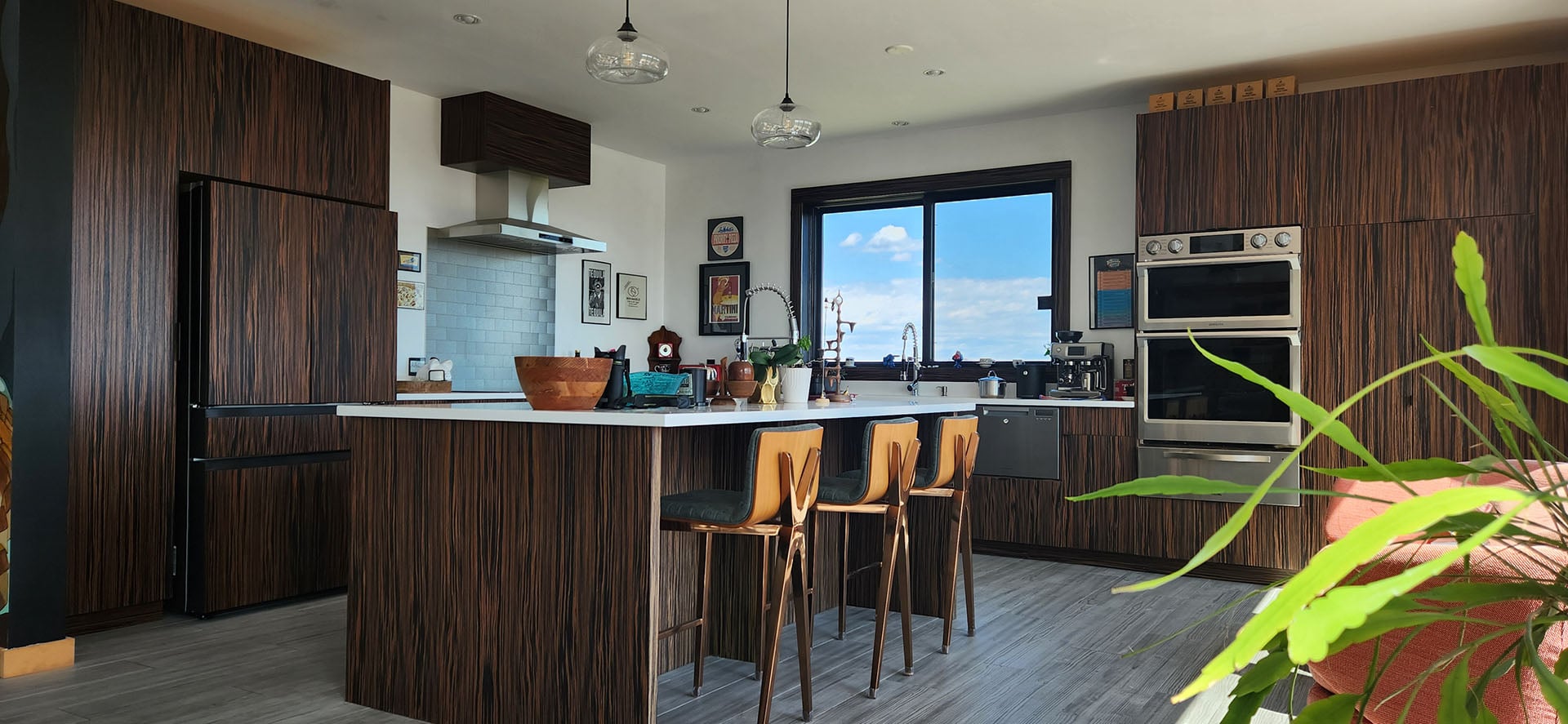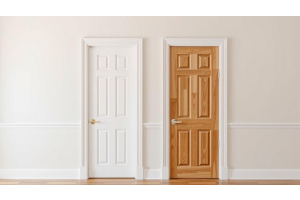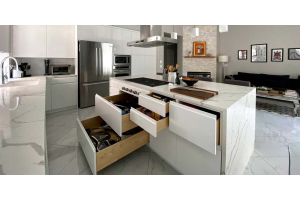
Pantry cabinets come in a variety of sizes, typically ranging from twelve to thirty-six inches in width for standard units, while walk-in pantries can be customized to fit the available space. Whether you’re working with a compact kitchen or designing a spacious culinary haven, choosing the right pantry sizes for kitchen organization is essential for both style and function.
The best kitchen storage solutions balance available space with storage needs. A small pantry cabinet–between twelve and eighteen inches wide–is perfect for tight spaces, while a mid-sized option, around twenty-four to thirty-six inches wide, offers ample storage without overwhelming the kitchen.
For those with extra room, a walk-in pantry provides maximum storage and convenience. No matter your kitchen size, selecting the right pantry cabinet ensures a well-organized and efficient cooking space!
The Size Spectrum
Pantry cabinets come in a variety of sizes. From slim, tall kitchen cabinets perfect for tight spaces to expansive walk-ins, there's a size for every kitchen.
For Homeowners: Personalize Your Pantry
Pantries are one of the easiest ways to tailor your kitchen to your lifestyle. Are you a bulk buyer, a gourmet chef with a plethora of ingredients, or a minimalist who loves clean lines and uncluttered spaces?
Compact pantries are ideal for smaller kitchens and minimal storage needs. These pantries range from twelve to eighteen inches in width and can fit snugly into most layouts.
Standard pantries are the most common choice of homeowners, offering decent storage without requiring too much space. These pantries are usually twenty-four to thirty-six inches wide. They can accommodate more items than compact options, but still manage not to dominate the kitchen.
Walk-in pantries are the crown jewel of the kitchen for those with space and money. Walk-in pantries can vary greatly in dimension, from the size of a small closet to a full room.
For House-Flippers: Size for Salability
If you remodel homes for resale, pantry size can significantly affect a property's appeal. Part of your consideration should be your target market–are they more likely to be large families in need of ample storage or young professionals who crave space-efficient designs? This is one of the areas where what goes in a pantry versus cabinets differs, so keep all your options in mind.
A medium-sized pantry cabinet is often a safe bet, offering enough storage to be attractive to clients while still fitting into a range of kitchen sizes. However, if you’re dealing with a high-end property, investing in a custom-made pantry tailored to the kitchen’s dimensions could pay off handsomely.
For the Business-Minded: Profiting from Pantries
If you’re looking to maximize profitability, the key is finding the sweet spot between cost and appeal. The cost to build pantry cabinets varies widely, but whichever design you choose should enhance the property’s value without taking up too much of your budget.
In smaller properties, a compact pantry can add functionality without a big price tag. For higher-end renovations, it could be worth considering larger, more luxurious options that can act as a selling point.
Choosing the Right Size
When selecting a pantry cabinet, there are several factors that are helpful to keep in mind:
Kitchen Size
The pantry should complement but not overpower the room. Make sure there's enough room for the homeowners to navigate the room, especially in larger families that may crowd the space.
Storage Needs
Consider what kind of storage the homeowners will need. If they’re likely to stock up on bulk items or have a collection of kitchen gadgets, a larger pantry might be necessary.
Design Aesthetics
The pantry should match the kitchen's design. A mismatched pantry can easily disrupt the flow of the space and stick out like a sore thumb.
Moving Forward
Choosing the right pantry cabinet is like picking the perfect pair of shoes–there are endless options, and it’s up to you to find the one that fits just right. Homeowners should balance personal style with practicality, house-flippers should focus on appealing to a broad range of potential buyers, and the business-oriented should maximize value.
Whether you’re going for cozy and compact or grand and spacious, the right pantry size can elevate and transform any kitchen!






